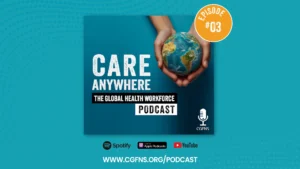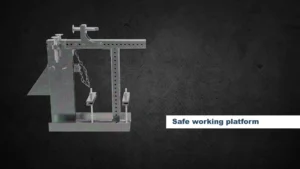Advanced Technology Can Provide the Visual Data to Quickly Identify Critical Infrastructure Needs
The U.S. is facing an urgent and critical infrastructure crisis, and nowhere is this more evident than in the thousands of aging, decaying, and in some cases, downright dangerous bridges. Naturally, bridge replacement seems like the clear solution, but other things like money, time and pre-planning come into play. Even with the biggest infrastructure bill in history to assist in getting these mountainous tasks done another mechanism could help get it done faster.
But now a more pragmatic approach is emerging. One that leverages the power of technology to keep track of bridge health via several modern devices and tools. This will provide data and analytics to allow experts to go beyond the limitations of original engineering designs and provide an understanding of each bridge’s history and performance. Given the growing concerns of climate change, the capability to monitor and analyze performance data across multiple bridges can even inform budget and safety decisions. This approach offers several benefits ranging from cutting costs, to actively changing how critical infrastructure is managed.
Dustin Parkman is the Vice President of Transportation at Bentley Systems — a global leader in engineering software for advancing infrastructure. Parkman has decades of experience in the technology industry, and focuses on leveraging data analytics, sensor technologies, and digital twins to offer smarter, safer, and more sustainable solutions for infrastructure management. Parkman detailed Bentley’s technology and how it’s at the forefront of this revolution and explored the ways this will prioritize repair and maintenance projects.
Parkman’s Thoughts on Critical Infrastructure
The Challenges of Bridge Replacement and Maintenance
“Because the problem is so large, the practicalities of it are you’re never going to be able to replace 76,000 bridges to 120,000 bridges in a timeframe that’s going to be acceptable. The 76,000 that need to be replaced, they span everything from large complex bridges to small rural bridges.”
Focus Areas for Technology Providers
“I think in the areas that we really kind of been focused on as a technology provider is really kind of your major artery bridges, things that have scour criticality, bridges over waterways and things like that, which are susceptible to a lot more risks than your traditional kind of intersection bridge or something along those lines.”
Using Technology for Bridge Monitoring
“So, what we’ve been focusing on as a technology provider is really trying to work on solutions that can instrument these bridges to provide stakeholders, general public, more insights about how these bridges are actually performing.”
Importance of Data and Bridge Life Span
“Most of the data that comes back with regards to replacement and as well as critical maintenance is based on the original engineering design, which is, you know, most bridges were engineered for a lifespan of 50 to 100 years. And so that’s where a lot of the statistical data comes from.”
Long-Term vs Short-Term Solutions
“So while that is a plan long-term for many departments of transportation to replace and upgrade their total bridge programs, in the near term, just due to all the different bridge failures we’ve seen in the market due to changing environmental conditions, whether we’ve seen kind of the more pragmatic short-term solution to be able to leverage kind of data about these assets to make better informed decisions and basically prioritize your capital allocations where you have the highest risk exposure to the general public.”
Real-Time Monitoring and Actionable Insights
“Imagine if your critical risk bridges have a real-time EKG machine, so to speak, kind of telling you the health of the bridge, how it’s performing, and basically raising any type of risks immediately to the stakeholders so that they can take action.”
Efficiency in Bridge Assessments
“And so, by being able to do that much more from a technology standpoint and remotely, it allows them to do these assessments way more efficiently at scale, so that not only can you capture the data at scale, but you can manually interact with that information in a much richer way than traditional methods and means.”
Leveraging Different Survey Methods
“With some of the newer methods, we’re able to leverage a lot of the different survey methods, whether it be from drones or mobile scanning data, and incorporate that into a monitoring solution.”
Using Data for Capital Allocation
“So you end up with this kind of immersive spatial view of all the data points about a bridge, including its throughput and things like that, which helps to inform the maintenance teams and capital improvement teams as to, you know, what do they need to do about a particular bridge?”
Analyzing Data Across Multiple Bridges
“And so doing that at an individual bridge level, while interesting, it’s a lot more valuable when you can do that across a collection of bridges. So a district, a state, a city.”
Importance of Monitoring in Changing Weather Conditions
“With increased heat conditions, concrete structures, they move when weather patterns change, right? They compress, they contract. And so being able to look at one bridge is interesting, but when you can look at thousands of them to understand how that looks with regards to weather pattern changes, you really start to understand the risk and scale and the corrective measures.”
Critical Environmental Factors
“The biggest ones seem to be flooding. Flooding would scour critical bridges. Those usually have the highest impact to environmental conditions, but the heat waves that we’ve been seeing globally have also raised a lot of red flags.”
Digital Twins and Emerging Technologies
“I think the thing that’s interesting and new, particularly with digital twins, you’re starting to see the convergence of a few different technologies. Digital twins are a way to bring that all together. So digital twins give you a way to kind of visualize that data at scale, and you can look at it because it’s a physical replicate of the infrastructure itself.”
The Role of AI and Machine Learning in Monitoring
“Because the data sets are so large from monitoring systems, the introduction of artificial intelligence and machine learning is making the analysis of that data way more effective to kind of identify what are the exceptions. Because typically with monitoring in general, the data is pretty boring, right? Because in most cases, everything’s working as it should. What you really want to know is where are the exceptions? Where are the behavioral changes with infrastructure outside their normal risk conditions?”
Article written by Alexandra Simon.







